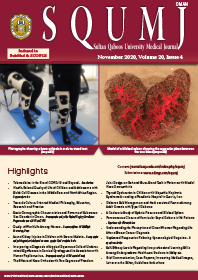Main Article Content
Abstract
Objectives: Substance use disorder is a global challenge. Therefore, this study aimed to provide an updated view of socio-demographic characteristics and patterns of substance use in Oman. Methods: This retrospective descriptive study was conducted between 2004 and 2018. Data were retrieved from Oman’s National Drug Addict Registry. The data collected included the socio-demographic characteristics of registered cases, the proportion of various psychoactive substances’ consumption and their routes of administration, the associated sociodemographic determinants as well as comorbid conditions. Results: A total of 6,453 cases were registered during the study’s timeframe. The majority of which were Omani (97.9%), male (98.7%), single (57.9%), unemployed (50.2%), had an education level below university (81.0%) and were adolescents and young adults (77.0%). Opiates were the most common substance used (66.6%) and more than half of the sample were polydrug users (51.0%). Injecting-drug users constituted 53.4% of the total registered cases. The proportion of people with hepatitis virus C, hepatits virus B and HIV among the registered cases were 46.9%, 5.1% and 3.7%, respectively. Conclusion: The findings are in favour of rapidly escalating the introduction of a substance use preventive programme at all school levels as well as making opioid substitution therapy and other harm reduction programmes available in Oman.
Keywords: Substance Use Disorders; Intravenous Drug Abuse; Opioid-Related Disorders; Comorbidity; Oman.
Article Details

This work is licensed under a Creative Commons Attribution-NoDerivatives 4.0 International License.
